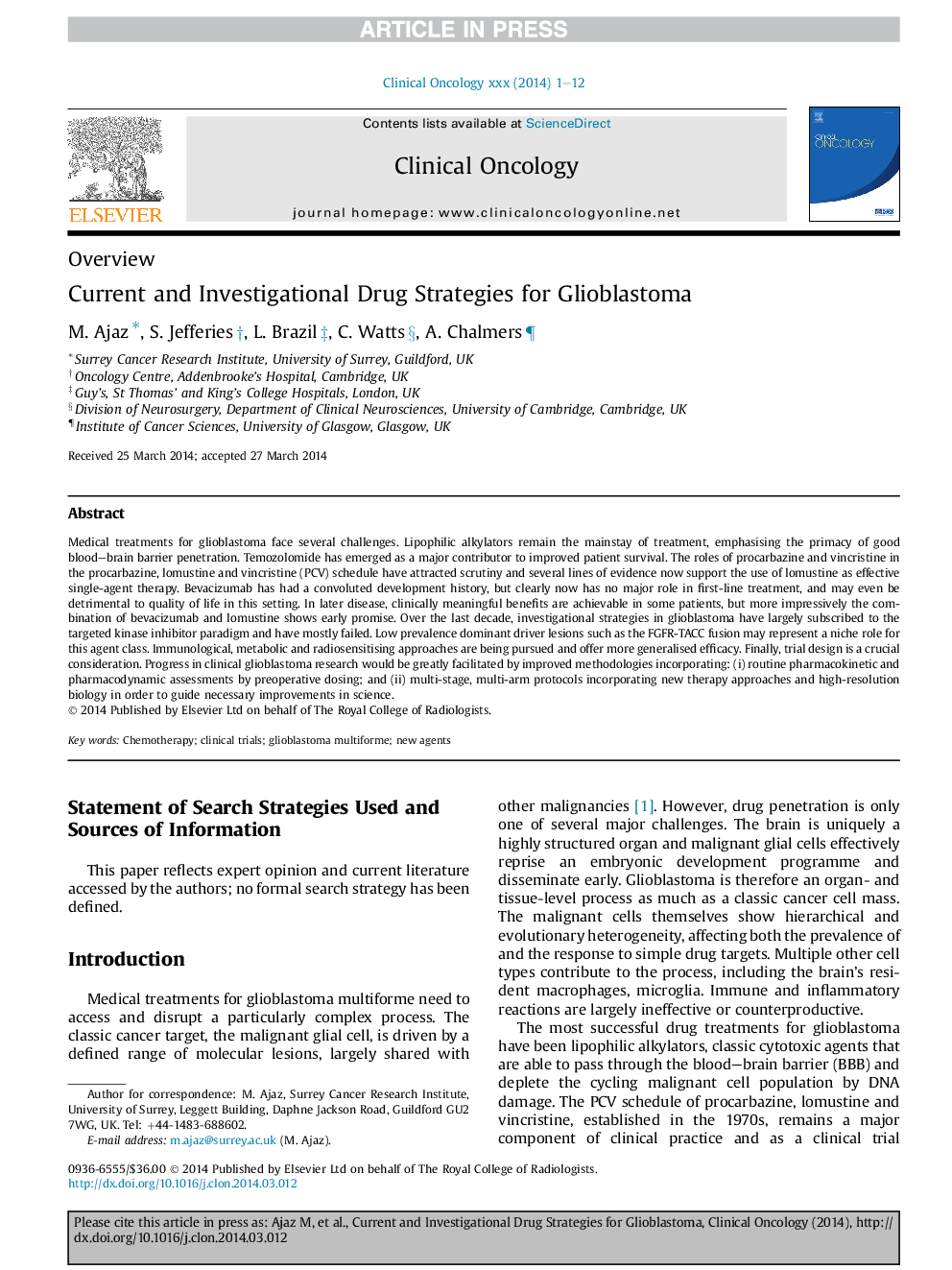| Article ID | Journal | Published Year | Pages | File Type |
|---|---|---|---|---|
| 5698321 | Clinical Oncology | 2014 | 12 Pages |
Abstract
Medical treatments for glioblastoma face several challenges. Lipophilic alkylators remain the mainstay of treatment, emphasising the primacy of good blood-brain barrier penetration. Temozolomide has emerged as a major contributor to improved patient survival. The roles of procarbazine and vincristine in the procarbazine, lomustine and vincristine (PCV) schedule have attracted scrutiny and several lines of evidence now support the use of lomustine as effective single-agent therapy. Bevacizumab has had a convoluted development history, but clearly now has no major role in first-line treatment, and may even be detrimental to quality of life in this setting. In later disease, clinically meaningful benefits are achievable in some patients, but more impressively the combination of bevacizumab and lomustine shows early promise. Over the last decade, investigational strategies in glioblastoma have largely subscribed to the targeted kinase inhibitor paradigm and have mostly failed. Low prevalence dominant driver lesions such as the FGFR-TACC fusion may represent a niche role for this agent class. Immunological, metabolic and radiosensitising approaches are being pursued and offer more generalised efficacy. Finally, trial design is a crucial consideration. Progress in clinical glioblastoma research would be greatly facilitated by improved methodologies incorporating: (i) routine pharmacokinetic and pharmacodynamic assessments by preoperative dosing; and (ii) multi-stage, multi-arm protocols incorporating new therapy approaches and high-resolution biology in order to guide necessary improvements in science.
Related Topics
Health Sciences
Medicine and Dentistry
Oncology
Authors
M. Ajaz, S. Jefferies, L. Brazil, C. Watts, A. Chalmers,
